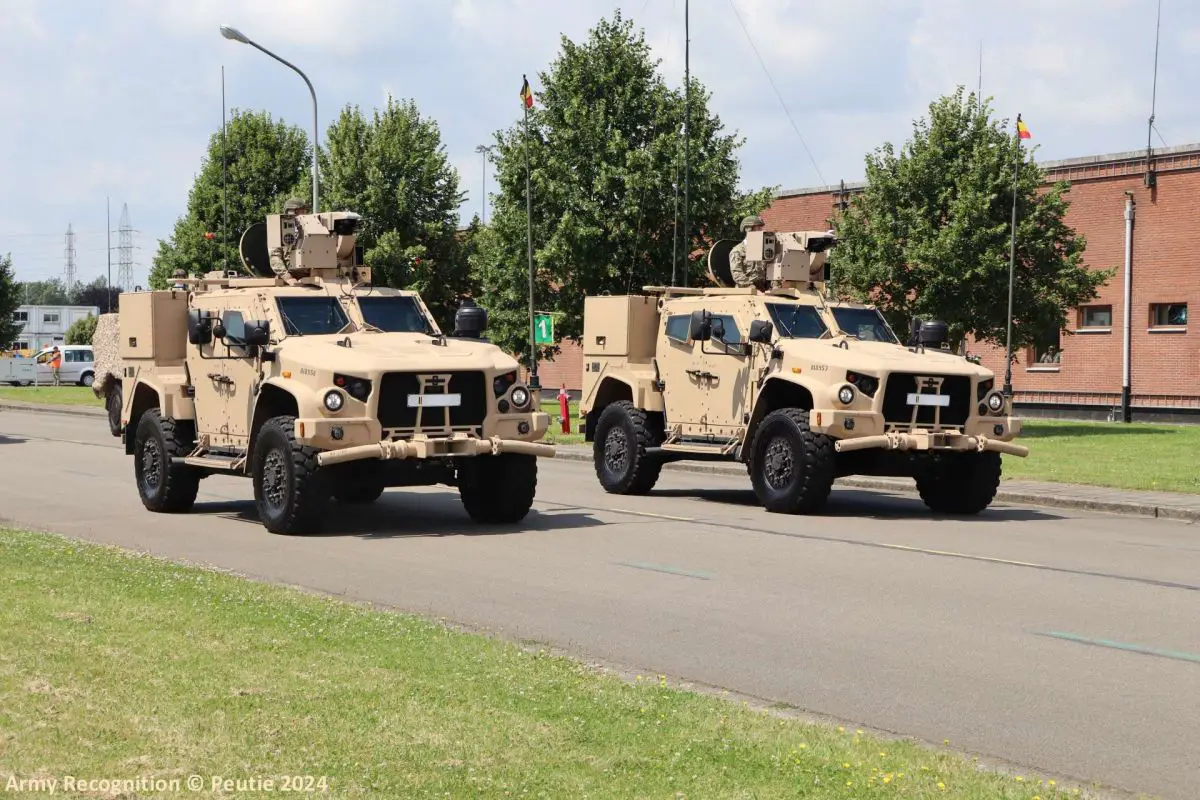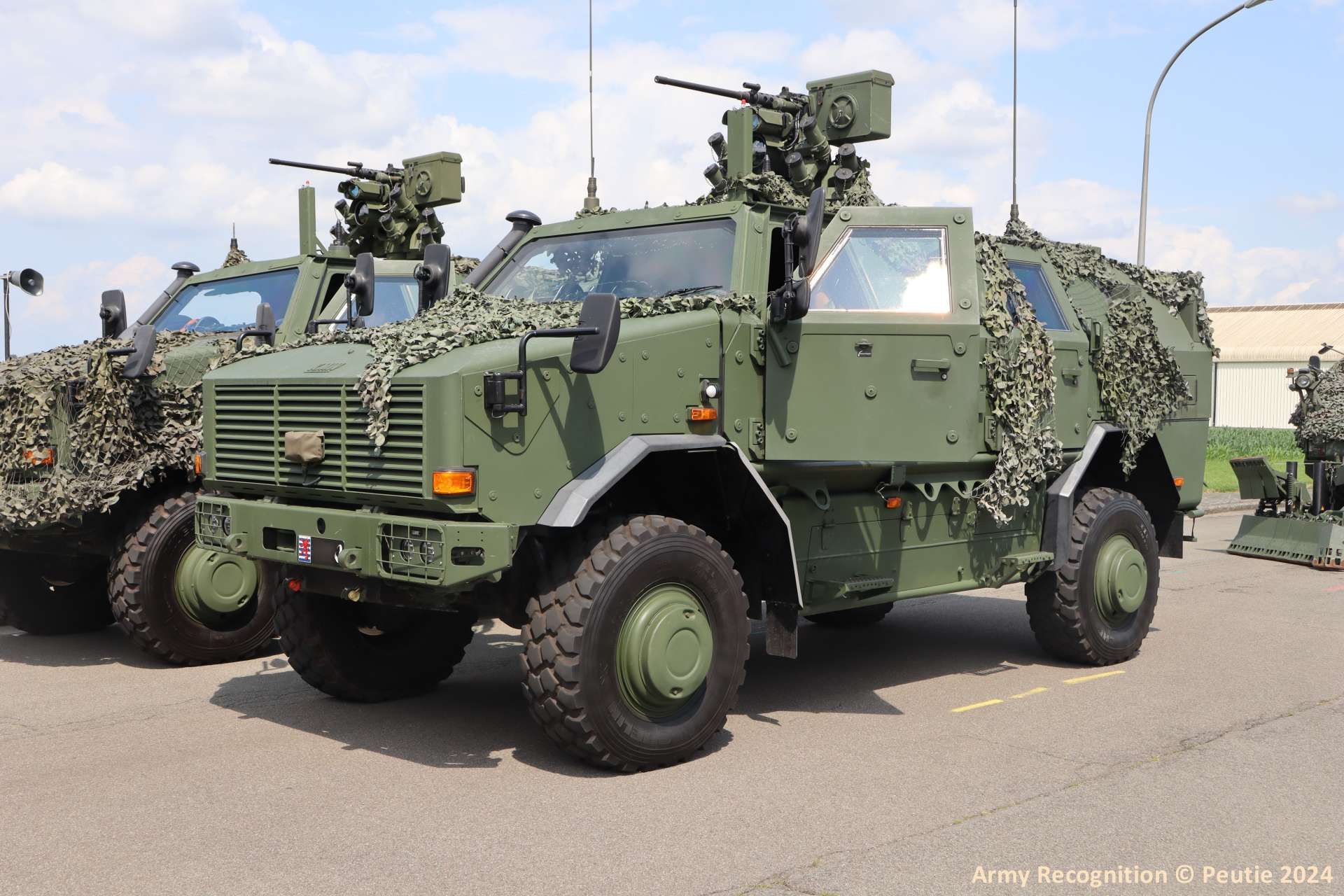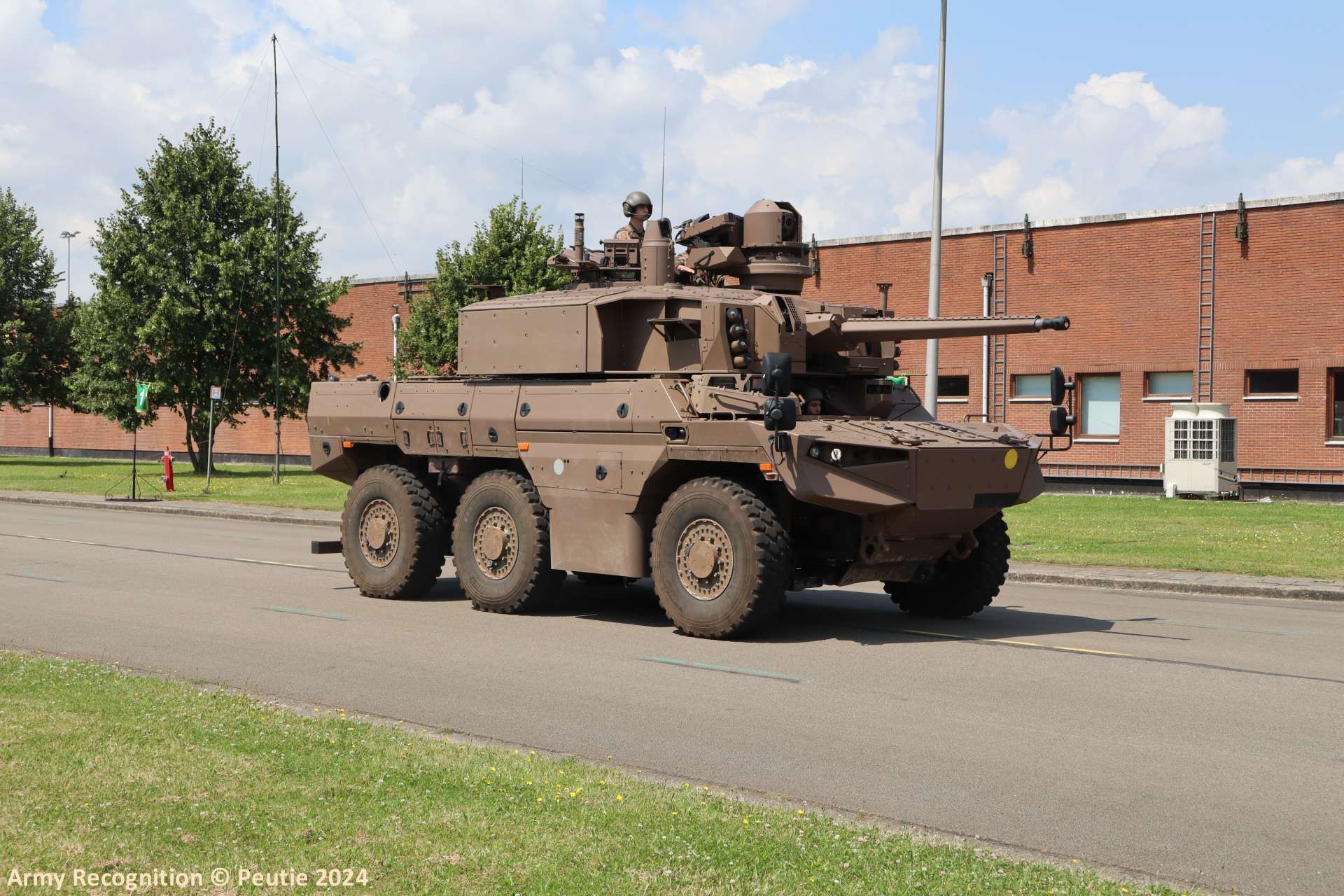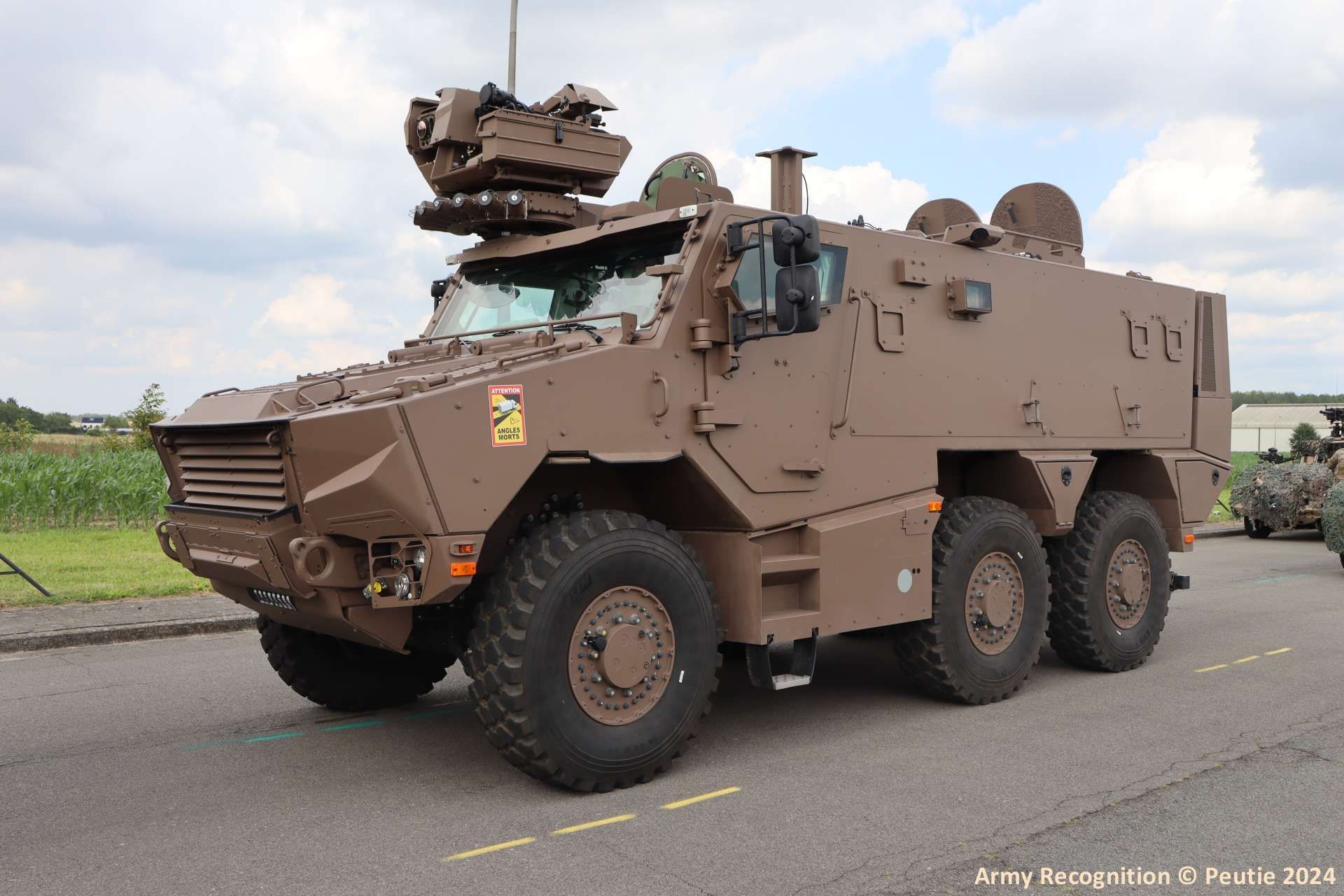Breaking News
Belgian Army's JLTV Falcon makes grand entrance ahead of National Parade.
On July 17, 2024, the Belgian Army conducted rehearsals for the motorized column scheduled for the July 21 parade at the Peutie military base. This event, open to the press, featured vehicles from various armies, including the French Army's Griffon, Jaguar, and CAESAr 6x6, as well as the Luxembourg Army's Dingo 2. Additionally, it marked the first public appearance of the Belgian version of the Joint Light Tactical Vehicle (JLTV), known as the Falcon or Command and Liaison Vehicle (CLV), in various configurations.
Follow Army Recognition on Google News at this link

A total of 322 JLTVs, designated as CLV Falcon in the Belgian Army, will replace the 437 IVECO LMV Lynx armored vehicles currently in service. (Picture source: Army Recognition)
On January 19, 2024, the Bataljon Jagers te Paard - Bataillon de Chasseurs à Cheval, a cavalry unit of the Belgian Army, announced on Facebook that it had received its first batch of new JLTVs from Oshkosh Defense. These vehicles are intended to replace the IVECO Lynx (LMV) vehicles currently in service. The sand color of these vehicles, noted during the announcement, raised questions about whether they would receive removable camouflage stickers similar to those used by the French Army.
A tweet from the Directorate General Material Resources (DGMR) of the Belgian Army on September 11, 2020, indicated that Oshkosh Defense had secured the contract to supply 322 JLTVs designated as CLVs to replace the IVECO LMV Lynx armored vehicles. The DGMR's announcement specified that the Belgian Council of Ministers had approved the Ministry of Defense's acquisition of these vehicles, amounting to €134.7 million. This contract included a fourteen-day period for competitors to lodge appeals with the Council of State. The JLTVs were slated for delivery starting in 2023, ahead of the planned 2026 retirement of the current Lynx fleet.
These JLTV CLVs will replace the 437 Lynx vehicles currently in service, which were built in 2005 and entered service in 2007. The early retirement of these vehicles is due to structural issues, including cracks in the chassis and roof armor of the 120 SPS and RPK versions equipped with remote weapon stations (RWS) and additional armor, which significantly increased their weight beyond the manufacturer's original specifications.

Of the 322 JLTVs, 135 will be equipped with a Belgian-made FN Herstal deFNder Light RWS armed with a 7.62mm machine gun. (Picture source: Army Recognition)
The Oshkosh contract also includes a €15.4 million agreement for technical assistance and logistical support for the new CLVs during their first four years of service. Of the 322 JLTVs, 135 will be equipped with an FN Herstal deFNder Light RWS armed with a 7.62mm machine gun. The Belgian Ministry of Defense sought an "off the shelf" solution to avoid development costs, opting for a mature vehicle already in use by partner countries, ensuring it met requirements for payload, tactical mobility, and occupant protection.
The JLTV CLV Falcons will be integrated with other vehicles under the "Motorized Capacity" (CaMo) program, which includes 382 VBMR Griffons and 60 EBRC Jaguar reconnaissance and combat armored vehicles, along with 19 CAESAr MkII self-propelled howitzers, all acquired through a partnership with France. This integration aligns with the Belgian Defense's strategic vision for 2016-2030, guiding defense policy, investments, operational evolution, and personnel management. This strategic vision, reflecting government agreements and contributions from defense specialists, the Defense Staff, Parliament, and academia, was first released on June 29, 2016, and updated in June 2021.
The JLTV is seeing increasing adoption across various military forces globally. Over 20,000 units have been produced by Oshkosh Defense as of June 2023. The vehicle is utilized by the U.S. Army, Marine Corps, Air Force, and Navy, as well as several NATO allies and other partner countries. Slovakia, for example, ordered 160 JLTVs in 2023, while Lithuania has an ongoing contract for 350 additional units beyond their initial order of 200.
In terms of performance, the JLTV features a GM Duramax V8 engine paired with an Allison 2500 transmission, offering significant power and reliability. It has the TAK-4i intelligent independent suspension system, which provides robust off-road mobility. The vehicle is designed to offer Mine-Resistant Ambush Protected (MRAP)-level defense against improvised explosive devices (IEDs) and other threats. It can be equipped with additional armor and various weaponry, such as the FN Herstal deFNder Light remote weapon station. The JLTV's adaptability includes future enhancements, like hybrid-electric variants, which offer silent drive and extended operational capabilities.

The JLTV is used by the U.S. Army, Marine Corps, Air Force, and Navy, as well as several NATO allies and other partner countries, such as Slovakia and Lithuania. (Picture source: Army Recognition)
France and Luxembourg's vehicles on display at Belgian Army rehearsal:

The Luxembourg Army has a fleet of 48 Dingo 2 armored vehicles, acquired to enhance the Luxembourg Army's protected mobility and reconnaissance capabilities. The Dingo 2 is known for its high level of protection against small arms, artillery shrapnel, anti-personnel, and anti-tank mines, as well as NBC (nuclear, biological, and chemical) threats. (Picture source: Army Recognition)

The CAESAR 6x6 155mm self-propelled howitzers are noted by Ukrainian forces for their mobility, precision, and range of up to 40 kilometers, particularly in counter-battery fire situations. (Picture source: Army Recognition)

The Jaguar, an armored reconnaissance and combat vehicle developed by France in collaboration with the companies Nexter, Renault Trucks Defense (RTD), and Thales, is armed with a 40 mm cannon, a 7.62 mm machine gun, and medium-range anti-tank guided missiles. (Picture source: Army Recognition)

The Griffon, which began production in 2017 and entered service in 2019, is a multi-role armored vehicle designed to replace the older VAB (Véhicule de l'Avant Blindé) used by the French military since the 1970s. (Picture source: Army Recognition)


























